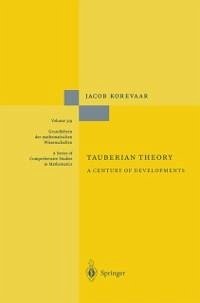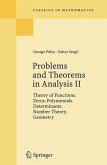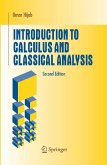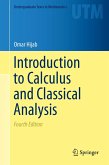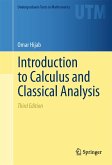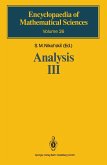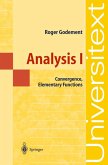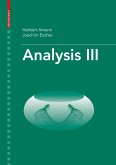Tauberian theory compares summability methods for series and integrals, helps to decide when there is convergence, and provides asymptotic and remainder estimates. The author shows the development of the theory from the beginning and his expert commentary evokes the excitement surrounding the early results. He shows the fascination of the difficult Hardy-Littlewood theorems and of an unexpected simple proof, and extolls Wiener's breakthrough based on Fourier theory. There are the spectacular "high-indices" theorems and Karamata's "regular variation", which permeates probability theory. The author presents Gelfand's elegant algebraic treatment of Wiener theory and his own distributional approach. There is also a new unified theory for Borel and "circle" methods. The text describes many Tauberian ways to the prime number theorem. A large bibliography and a substantial index round out the book.
Dieser Download kann aus rechtlichen Gründen nur mit Rechnungsadresse in A, B, BG, CY, CZ, D, DK, EW, E, FIN, F, GR, HR, H, IRL, I, LT, L, LR, M, NL, PL, P, R, S, SLO, SK ausgeliefert werden.
From the reviews: "The purpose of the monograph under review is to treat the principal Tauberian theorems in various categories by adopting the author's personal point of view which emphasizes the distributional aspects ... . the book carefully collects a rich amount of material on this topic. ... provides a detailed survey of almost all aspects of Tauberian theory. It will adopt a major position in the mathematical literature presently available on the various fields of summability methods." (Walter Schempp, Zentralblatt MATH, Vol. 1056, 2005) "Typically a Tauberian Theorem states that the asymptotic behaviour of certain 'moving averages' is comparable for a large family of convolution kernels. ... One cannot do justice to a big volume like this by listing all the important results provided. It is certainly the reference work in the field for the years to come, hopefully inspiring continued research ... ." (H. G. Feichtinger, Internationale Mathematische Nachrichten, Issue 203, 2006) "The aim of this monograph is 'to treat the principal Tauberian theorems in various categories and to provide attractive proofs.' ... Altogether, this volume treats an amazing variety of results. It will be an important reference for experts as well as anyone using Tauberian theorems, such as analytic number theorists." (Ch. Baxa, Monatshefte für Mathematik, Vol. 148 (2), 2006) "Tauberian theory deals with the problem of finding conditions under which a summable series is actually convergent. ... A large bibliography and a substantial index round out the book. All in all, this is a well-written, well laid out, interesting monograph, essential to anyone involved in Tauberian theory and related topics. Highly recommended!" (B. Kirstein, Zeitschrift für Analysis und ihre Anwendungen, Vol. 24 (4), 2005) "It is a monumental treatise, long years in the making, that covers the realm of Tauberian theory and its applications. ... the style is engaging: the pace is leisurely, the discussion is well motivated, and the exposition is very clear. The book contains a wealth of material, with numerous references to earlier literature, and is destined to become the standard source for Tauberian theory. It will be a classic for many years to come." (Peter Duren, SIAM Review, Vol. 47 (3), 2005) "This impressive volume describes the development of classical Tauberian theory-from its emergence in the early 1900s until the present. ... the author has done a superb job of selecting the results, methods of proof, and applications to include in this book. Add to that a smooth, nicely paced exposition, complete with historical notes and bibliographical references ... and the result is a great book that will be a valuable addition to any research mathematics library." (Angel V. Kumchev, Mathematical Reviews, Issue 2006 e)

